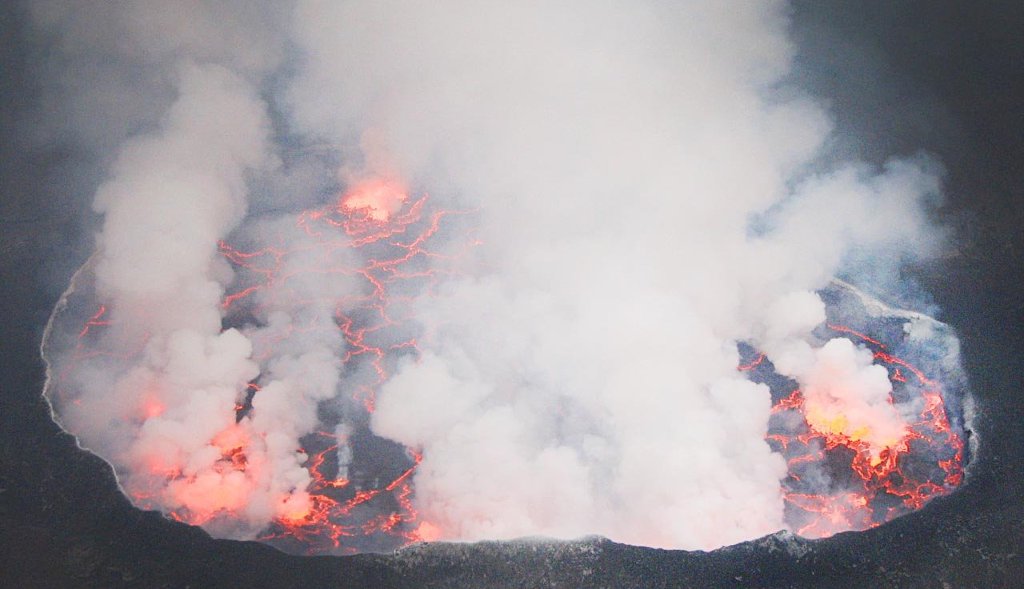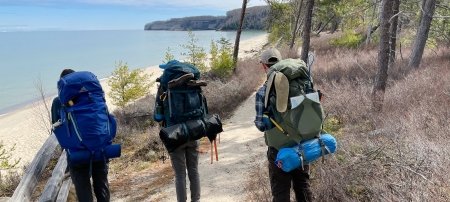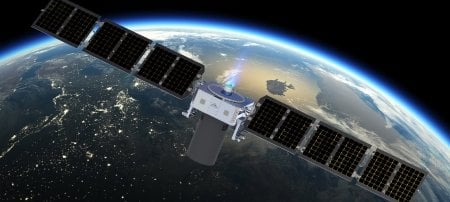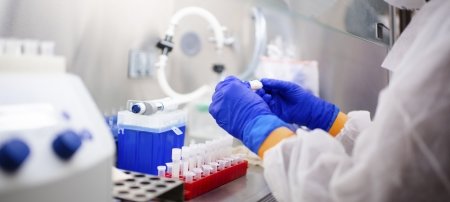NSF Grant Uses New Technology
Central America has a bull's-eye on its forehead when it comes to natural disasters.
Associate Professor Gregg Bluth (GMES) counts them off. "Earthquakes, volcanoes, hurricanes . . . There's a lot of need there, and their personnel are stretched pretty thin."
Enter a new, multi-faceted Michigan Tech program made possible through a five-year, $2.3 million grant from the National Science Foundation. The funding supports an array of projects, including the new Peace Corps Master's International program in Natural Hazards.
Taken together, they will use remote sensing to make life better for people in Guatemala, El Salvador, Nicaragua and Ecuador.
The project combines research and education and is known officially as "Remote Sensing for Hazard Mitigation and Resource Protection in Pacific Latin America."
One of the primary natural hazards the researchers will address are the dozen or so active volcanoes in the region.
Scientists routinely use remote sensing to monitor volcanic activity in hopes of predicting eruptions. These methods can be very effective in countries where there may be few trained scientists to personally monitor a wide range of geologic hazards. However, these methods require a long-term commitment to become a part of an overall hazard mitigation strategy.
"There isn't enough confidence in these methods, which take time and testing to establish for different volcanic settings," Bluth notes. The researchers hope that by establishing a long-term presence, in part through the Peace Corps program, and by working closely with their Latin American partners, these methods will gain more credibility and become a permanent part of the regions’ hazard mitigation programs.
Eruptions, while catastrophic, are rare events, so the researchers will also use remote sensing technology to address a need faced--day in and day out--by local populations: clean drinking water.
With a portion of the NSF grant, researchers will use satellite images not only to analyze volcanic emissions, but also to help find good sources of water. "We also plan to use satellites to study land cover and land use," Bluth says. "Using satellite images, you can see features on the surface which represent subsurface fractures, where groundwater may be more accessible."
On the ground, students will be using a different kind of remote sensing, seismic reflection, to study the water table.
"One of the region's persistent problems is finding good sources of drinking water," Bluth said. "Our research is aimed at coupling satellite data with geophysical surveys to identify more productive areas for future drilling."
That portion of the project will be undertaken by Associate Professor John Gierke (GMES) and students in the Aqua Terra Tech Enterprise, who will head to Boaco, Nicaragua, in December to begin fieldwork.
Currently, most of Boaco's 34,000 residents are without running water for all but a couple hours a day, a few days per week, due to inadequate supplies and storage capacity.
In addition, the researchers will work with geoscience agencies from the four participating Latin American countries. Each nation has a different set of tools to address hazard mitigation, and the team hopes that by encouraging cooperation, people throughout the entire region will benefit.
In addition to fostering science, education and the wellbeing of the local citizenry, the program should raise Michigan Tech's profile among other universities, Bluth adds. "We've got good collaborations going with the University of Hawaii and others," he says. "Students from around the country are coming here for grad school, since we offer some unique and very active programs in volcano remote sensing, geophysics and hydrogeology."
The co-principal investigators on the NSF grant are Gierke, graduate student Essa Gross and Professor Bill Rose (GMES). For more information, visit https://www.mtu.edu/geo/research/hazard-data/.
Michigan Technological University is a public research university founded in 1885 in Houghton, Michigan, and is home to more than 7,000 students from 55 countries around the world. Consistently ranked among the best universities in the country for return on investment, Michigan’s flagship technological university offers more than 120 undergraduate and graduate degree programs in science and technology, engineering, computing, forestry, business and economics, health professions, humanities, mathematics, social sciences, and the arts. The rural campus is situated just miles from Lake Superior in Michigan's Upper Peninsula, offering year-round opportunities for outdoor adventure.




Comments